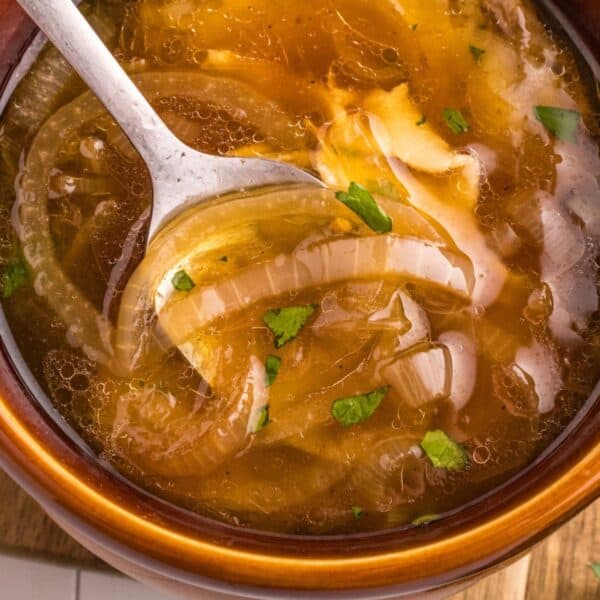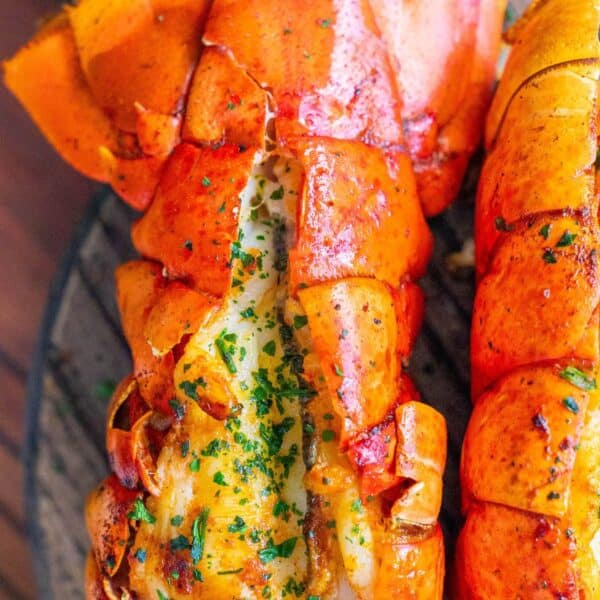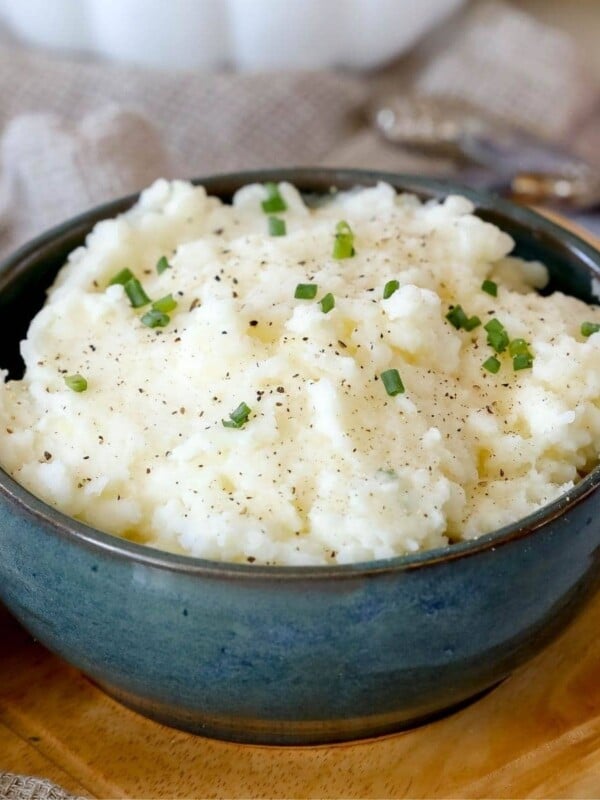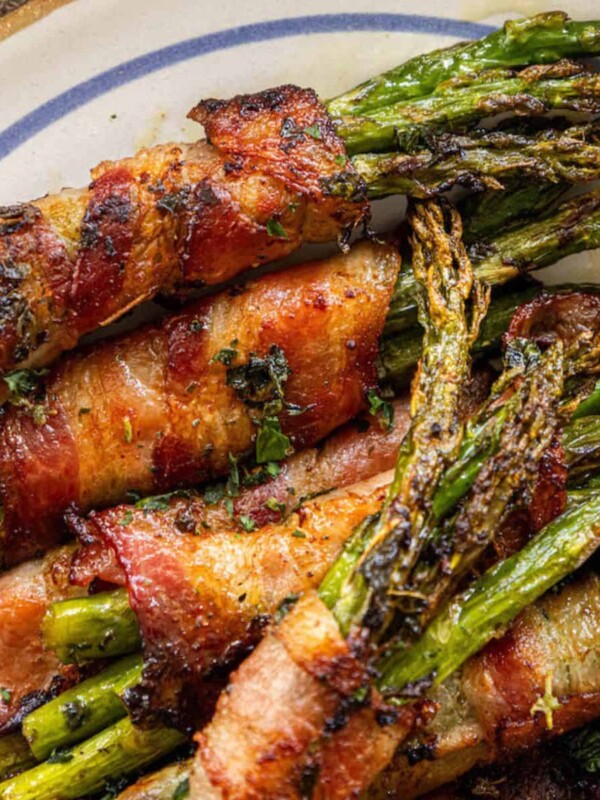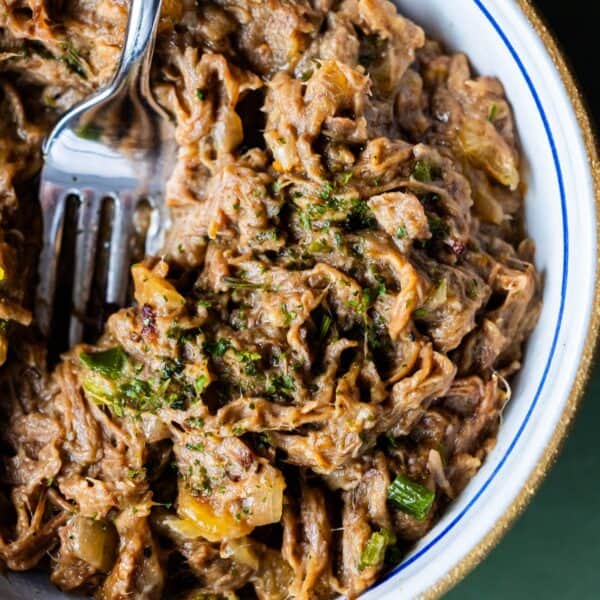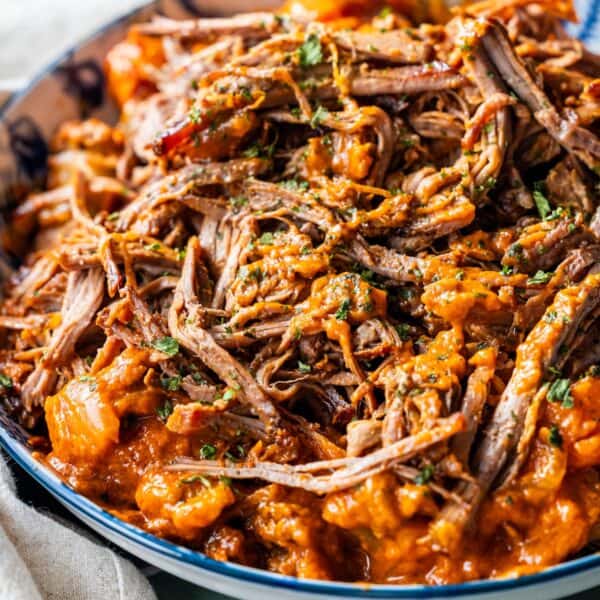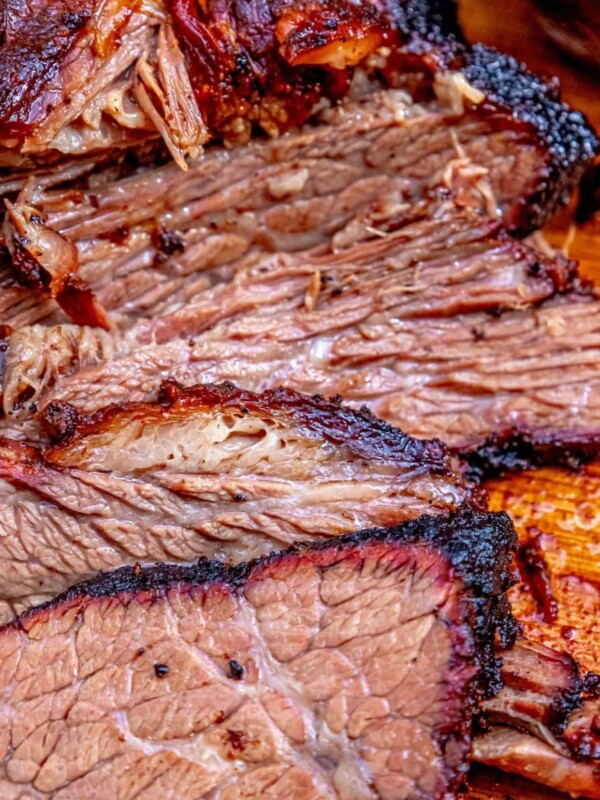This post contains affiliate links. Please read our disclosure policy.
I love using this Beef Tenderloin Recipe for holidays – it is the BEST and so easy – it is loaded with butter, garlic, and a kick of Dijon mustard or horseradish. This is one holiday dinner that looks like you’ve spent all day preparing it, but it is actually super simple, so you can get to work on lots of side dishes!
This dinner isn’t an inexpensive option – but if you head to Costco or Sams Club you can get a pretty good price for a big group gathering. This beef tenderloin recipe is one of my favorites because of how easy it is. If you can make a ribeye roast, (trust me, you can!), you can make this tenderloin.
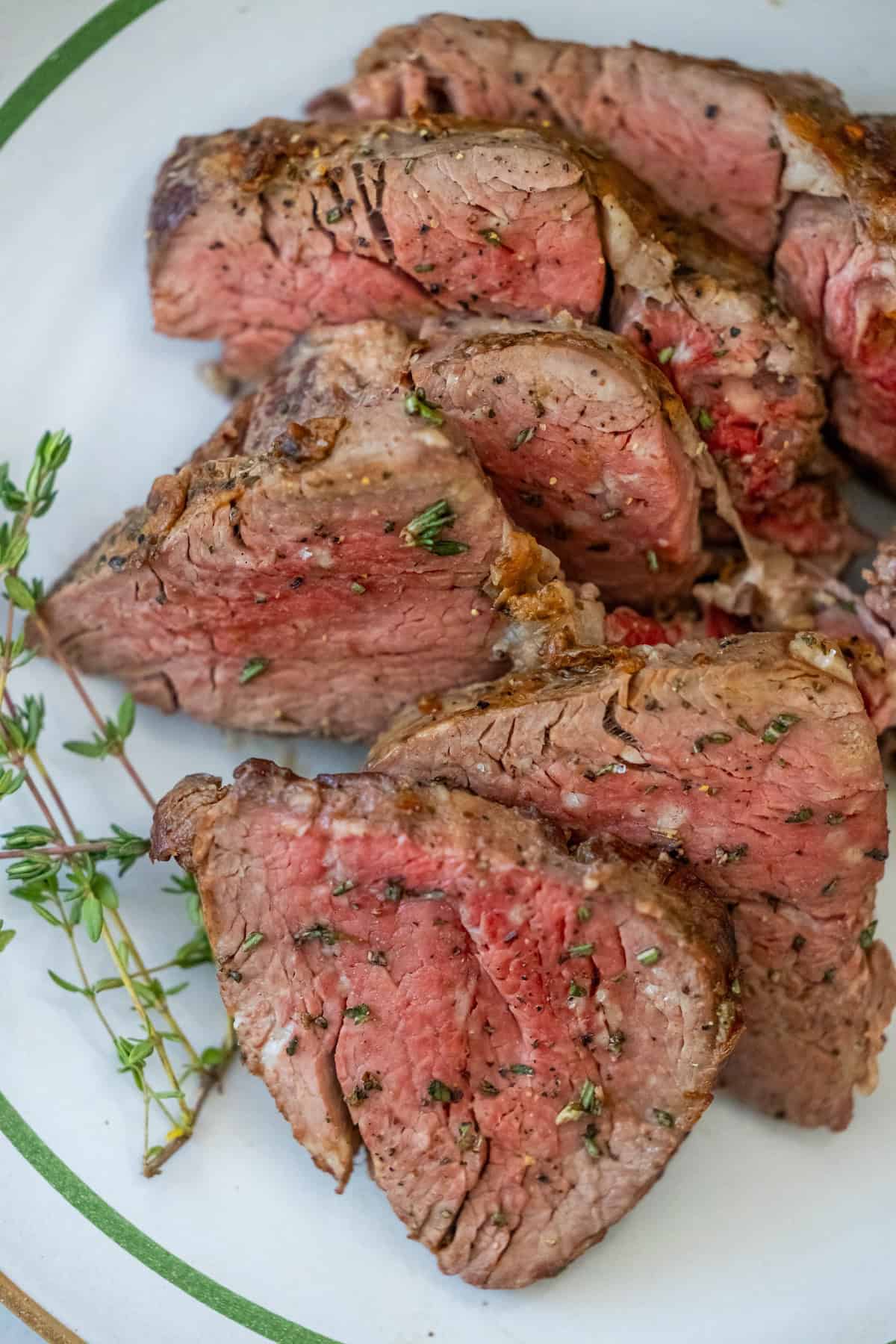
Don’t want all the extras in a recipe post? We provide a skip to recipe button in the top left corner, as well as a clickable table of contents, just below, to help make this page easier to navigate.
At Sweet C’s, I add lots of tips in all of my recipes – because I am a home cook without any formal training, and I find I am more confident making dishes when I understand why it works, and what each ingredient means to the flavor of a recipe. My goal is for even the most beginner home cook to feel empowered in the kitchen.
Table of contents
How to make Beef Tenderloin
First you will want to assemble the following ingredients:
- Beef tenderloin (4lbs) – Beef tenderloin boasts a mild, buttery flavor with a hint of natural richness.
- Sea salt (1 tsp) – Salt enhances and intensifies the existing flavors in a dish, providing a fundamental savory element.
- Black Pepper (1/2 tsp) – Pepper contributes a pungent, slightly spicy note that complements and adds depth to the tenderloin.
- Olive oil (2 tbsp) – Olive oil lends a fruity, grassy flavor with a silky texture, its perfect to sear the beef in before it goes in the oven.
- Butter (4 tbsp) – Butter provides a luxurious, creamy richness that enhances the depth and mouthfeel of the meat.
- Garlic (2 tsp) – Garlic imparts a pungent and earthy flavor with a subtle sweetness when cooked, often used to add depth and complexity to the meat.
- Dijon mustard or prepared Horseradish (1 tsp) – Dijon mustard offers a tangy and slightly sharp flavor profile with a hint of white wine undertones, lending a zesty kick. Horseradish delivers a pungent and spicy heat, accompanied by a distinct sharpness that awakens the palate. Use whichever you prefer or some of each!
After gathering your ingredients, we will use the following method:

Trim Tenderloin & Tie Off
Prepare the tenderloin by trimming any fat, cutting it in half, and tying it with butcher twine.

Season
Season the meat with salt and pepper, cover loosely with plastic wrap and leave it in the fridge to chill about 10 hours.

Mix Butter Topping
In a small bowl combine the butter, garlic, and Dijon mustard, or horseradish sauce.

Sear
Heat the oil in a heavy-bottom oven-safe pan on high and sear the tenderloin on all sides.

Slather Butter
Slather the butter garlic mixture over the tenderloin.
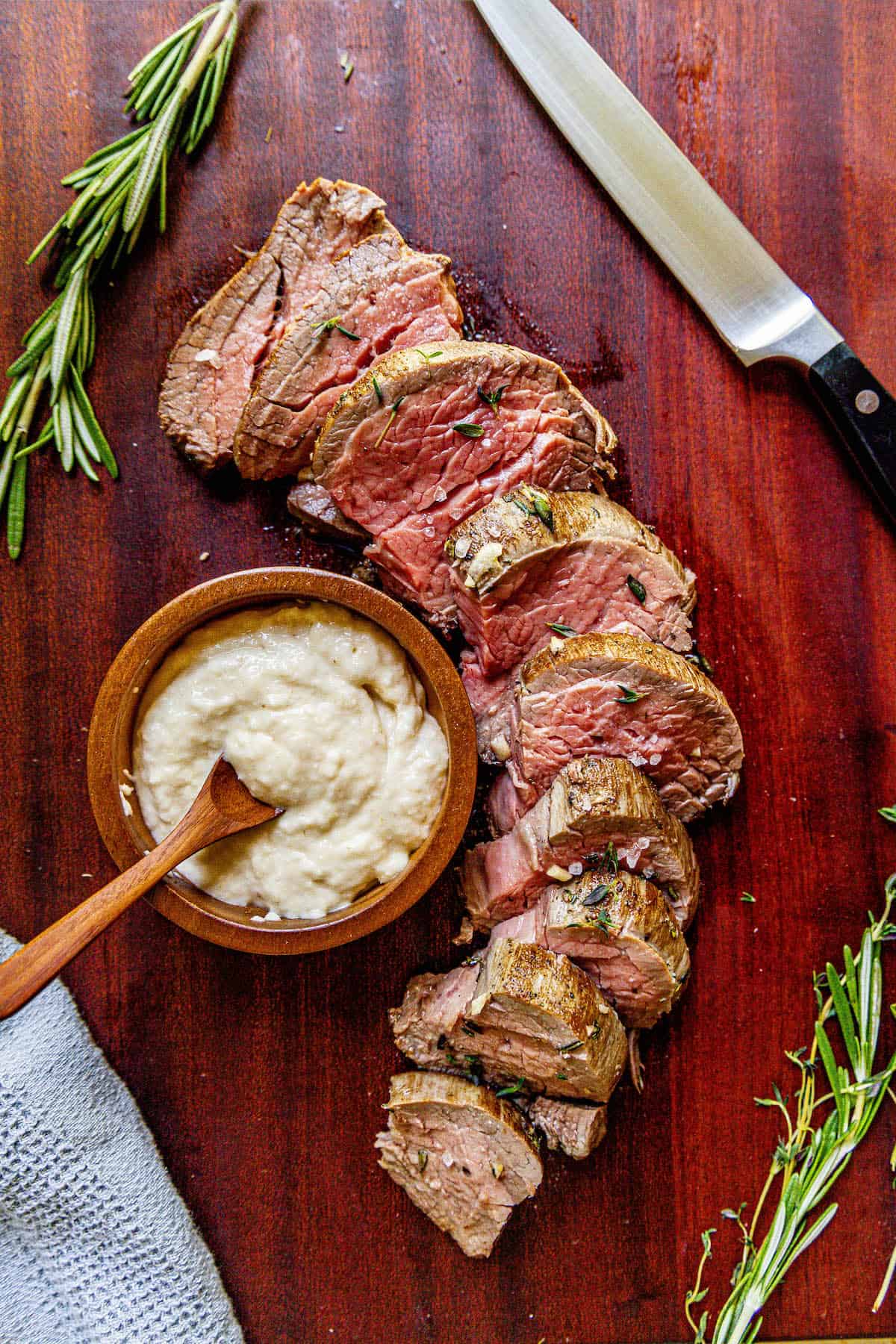
Bake
Place a probe thermometer in each piece of beef and place them in the hot pan. and place it in the oven at 425 degrees for 20 – 25 minutes until it reaches the desired temperature.
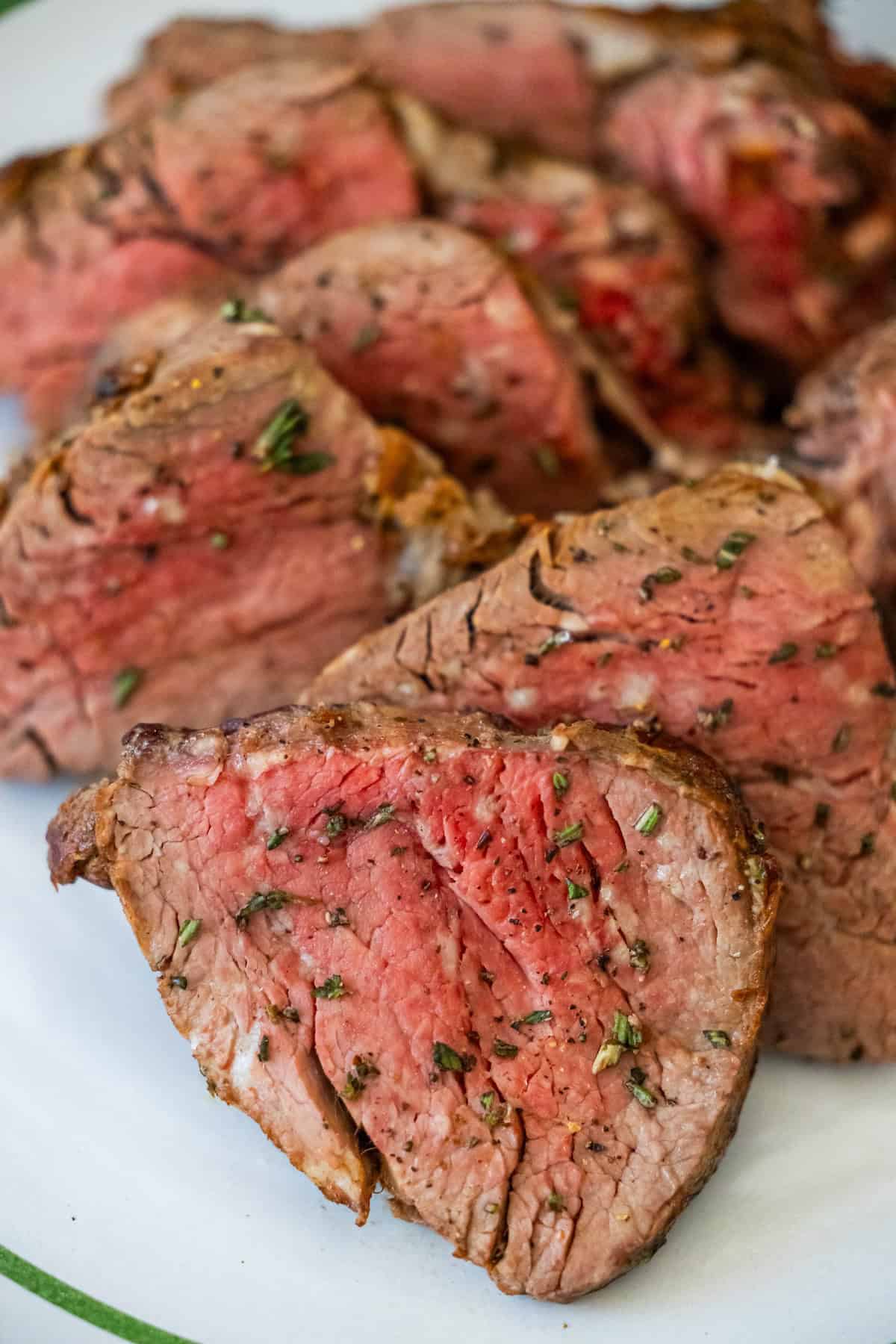
Rest
Remove the tenderloin from the oven and place on a cutting board, tent loosely with foil and let it sit about 15 minutes before slicing and enjoying!
Tips and Tricks for Perfect Beef Tenderloin
Select a Quality Cut: Start with a high-quality beef tenderloin, preferably center-cut, which is the most consistent in thickness and tenderness.
Trim and Tie: Remove excess fat and silver skin from the tenderloin. Tie it with kitchen twine at regular intervals to maintain its shape during roasting.
Season Generously: Season the beef tenderloin liberally with kosher salt and freshly ground black pepper. You can also add herbs and spices for extra flavor.
Room Temperature: Allow the beef to come to room temperature before roasting. This ensures even cooking.
Use a Meat Thermometer: A meat thermometer is your best friend. Insert it into the thickest part of the tenderloin before roasting to monitor the internal temperature accurately.
Resting: After roasting, allow the beef to rest tented with aluminum foil for 10-15 minutes. This allows the juices to redistribute, ensuring a juicy result when you slice it.
Carving: When carving, slice against the grain into medallions of your desired thickness. A sharp carving knife will make this task easier.
Sauces and Accompaniments: Serve beef tenderloin with a complementary sauce like red wine reduction, Béarnaise, or mushroom sauce. Consider pairing it with appropriate sides, such as roasted vegetables or mashed potatoes.
Temperature Variation: If you have guests who prefer different levels of doneness, you can slice the beef tenderloin into individual portions before roasting and cook them to different temperatures.
Resting Rack: Use a rack in the roasting pan to elevate the tenderloin slightly. This promotes even air circulation for more even cooking.
Pan Drippings: Don’t forget to save the pan drippings to make a flavorful sauce or gravy to serve with the beef.
Tenting: When tenting the beef with foil, make sure it’s loosely covered to avoid trapping steam and making the crust soggy.
Experiment: Feel free to experiment with different seasonings, rubs, and marinades to add variety and unique flavors to your beef tenderloin.
FAQs
Beef tenderloin is a cut of beef that comes from the loin area of the cow. It’s highly regarded for roasting because it’s incredibly tender and lean, with minimal connective tissue, resulting in a melt-in-your-mouth texture when cooked properly.
Look for a beef tenderloin that is well-marbled with fat for flavor and juiciness. It should have a uniform thickness for even cooking. Ask your butcher for the center-cut portion for the best quality.
The ideal internal temperature for a perfectly cooked beef tenderloin is around 125-130°F (52-55°C) for medium-rare. Use a meat thermometer to monitor the temperature for accuracy.
Yes, it’s essential to let the beef tenderloin rest for about 10-15 minutes after roasting. This allows the juices to redistribute throughout the meat, ensuring a juicier and more flavorful result when you slice it.
Slice beef tenderloin across the grain into medallions of your desired thickness. Serve it on a warmed platter with your chosen accompaniments and sauces.
Popular sauces include red wine reduction, Béarnaise sauce, mushroom sauce, and horseradish cream. The choice of sauce depends on personal preferences.
Yes, you can season and sear the beef tenderloin in advance, refrigerate it, and then roast it closer to serving time for convenience. Remember to factor in additional cooking time if starting from cold.



What to serve with Beef Tenderloin
Try some of these amazing combinations with your steak dinner:
Red Wine: A robust red wine, such as Cabernet Sauvignon or Malbec, pairs well with beef tenderloin, as the tannins in the wine complement the richness and flavors of the meat.
Mushroom Sauce: A creamy mushroom sauce adds depth and earthiness to the tenderloin’s mild flavor, creating a harmonious combination.
Horseradish: The sharp and spicy kick of horseradish sauce provides a contrast to the meat’s tenderness, creating a flavorful balance.
Garlic Mashed Potatoes: Creamy mashed potatoes infused with garlic offer a comforting side that complements the meat’s richness.
Asparagus: Roasted or grilled asparagus spears bring a fresh, crisp contrast to the beef, balancing the meal’s textures and flavors.
Béarnaise Sauce: This rich, buttery sauce with hints of tarragon and lemon elevates the beef’s flavor and adds a luxurious touch.
Romaine Parmesan Salad – This quick low-calorie salad can also be a meal by topping with your protein of choice.
Red Wine Reduction: A reduction sauce made from red wine, shallots, and beef stock enhances the meat’s natural flavors and adds depth.
Try some of my other favorite recipes like these:
If you love this easy recipe please click the stars below to give it a five star rating and leave a comment! Please also help me share on Instagram, Facebook, and Pinterest!
Share on Facebook
SharePin this now to find it later
Pin ItFollow on Instagram
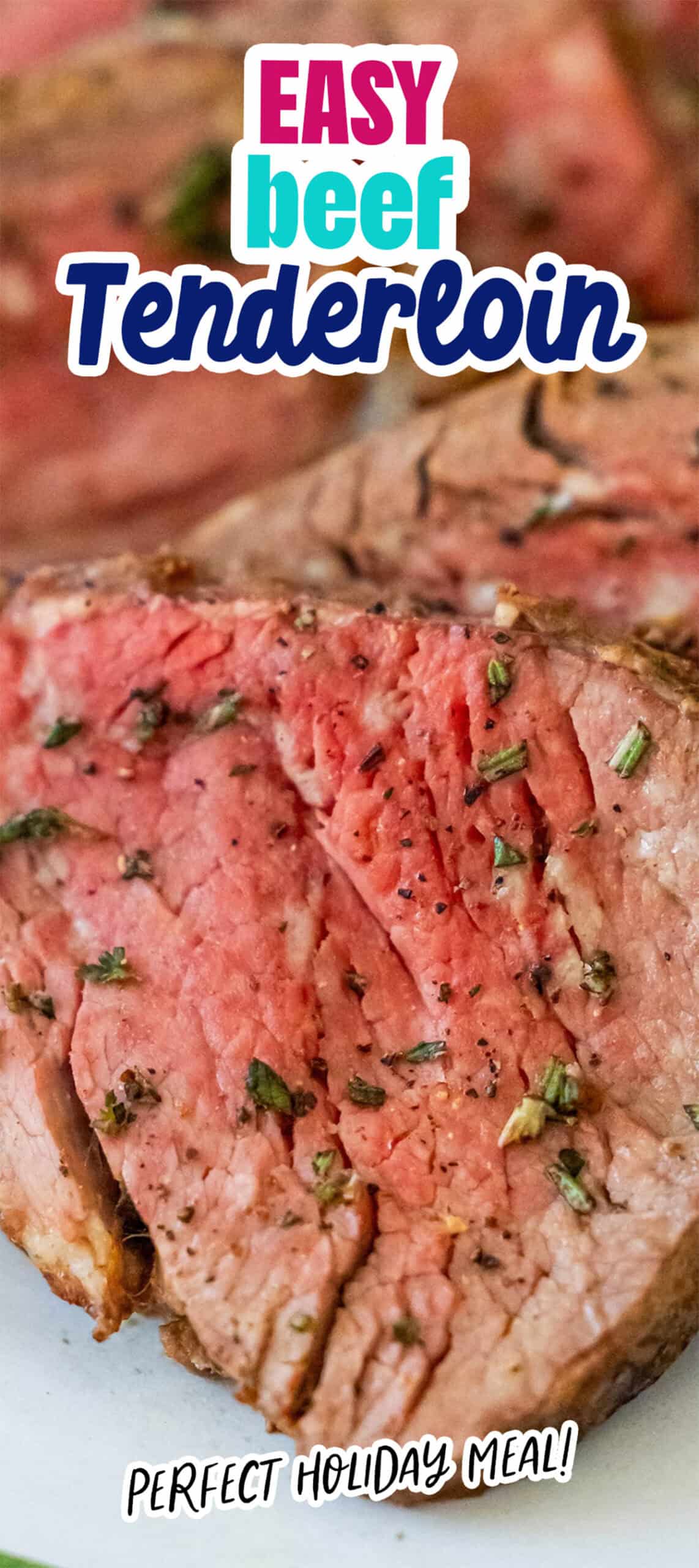
Only have 30 minutes to get dinner on the table? Sign up for my 30 minute dinner plans direct to your inbox!
Find and shop my favorite products in my Amazon storefront here!
Best Beef Tenderloin
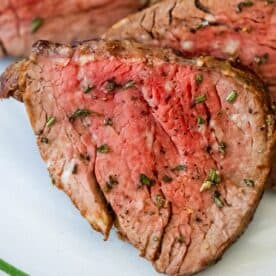
Equipment
Ingredients
- 4 lb beef tenderloin, trimmed of excess fat and tied
- 1 tsp sea salt, plus more to taste
- ½ tsp fresh ground black pepper
- 2 tbsp olive oil
- 4 tbsp salted butter, softened
- 2 tsp garlic, minced
- 1 tsp dijon mustard or prepared horseradish
Instructions
- Trim any excess fat off the tenderloin (if not already done by the butcher), cut it in half so you have two pieces and tie with butcher twine every few inches.
- Season the tenderloin with the salt and pepper, cover loosely with plastic wrap then leave it in the fridge for at least 10 hours. (This is an optional step but helps season the meat all the way through.
- Remove the roast from the fridge about two hours before cooking. Season it with a little more salt and pepper then let it sit uncovered for at least 2 hours so it can come to room temperature.
- Preheat the oven to 435 degrees F.
- Heat the oil to medium high in an oven safe cast iron skillet on the stovetop.
- Sear the two tenderloin pieces one at a time in the hot oil. You just want to brown the roast on all sides, about 3 minutes per side. Set aside
- Combine the softened butter with the garlic and dijon mustard.
- Slather each seared piece of tenderloin in the garlic butter and place a probe thermometer through the center of each piece (using a probe thermometer is the only way to ensure the meat is cooked to your preferred internal temperature). Set your probe thermometer to alert you when the meat has reached your doneness. Rare – 115 – 120 F, Medium Rare 120 – 125 F, Medium 130 – 135 F.
- Place the prepared tenderloins back in the oven safe skillet or on a sheet pan lined with tin foil and bake in the oven until the probe alerts you that the meat is cooked, about 18 – 25 minutes depending on the thickness of the meat.
- Remove the tenderloins from the oven, place them on a cutting board, tent loosely with foil and allow them to sit for 15 minutes to allow the juices to settle.
- Cut off the twine and slice into 1” pieces. Enjoy with horseradish or alone!
Nutrition
Nutrition information is automatically calculated, so should only be used as an approximation.
